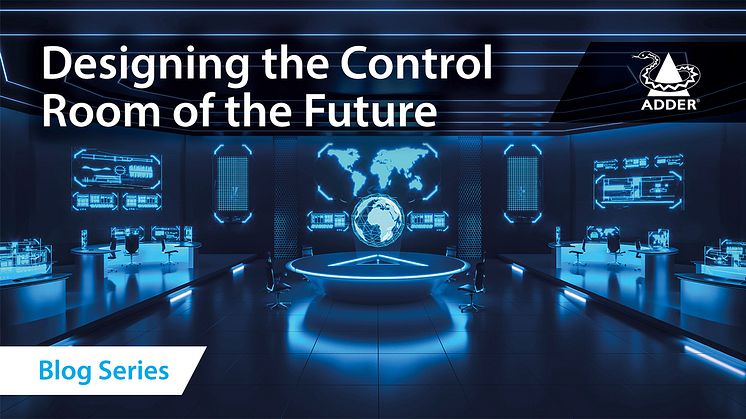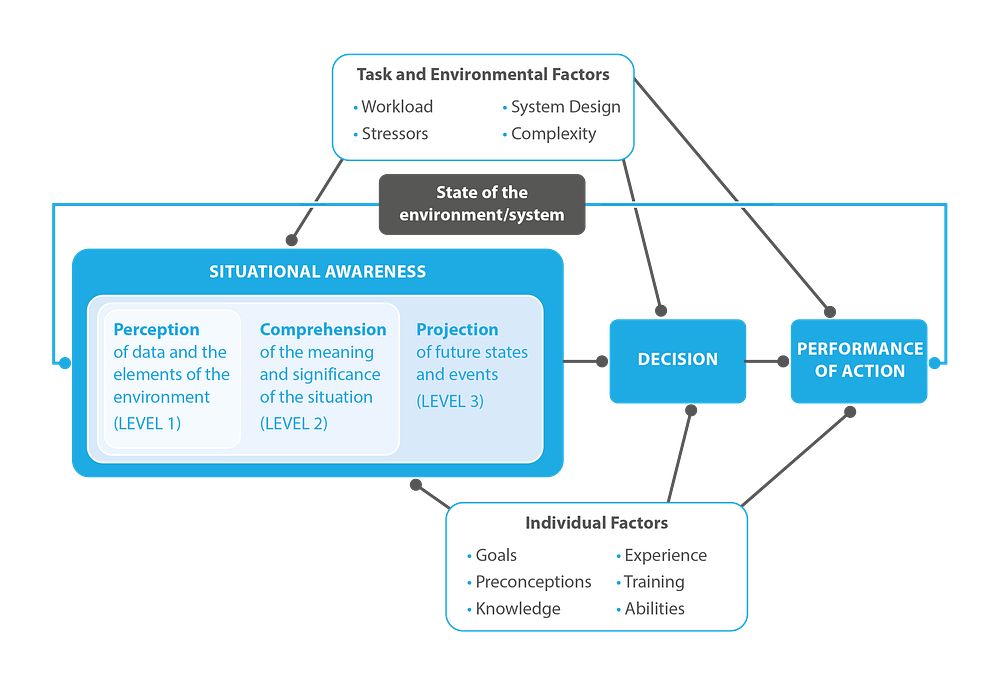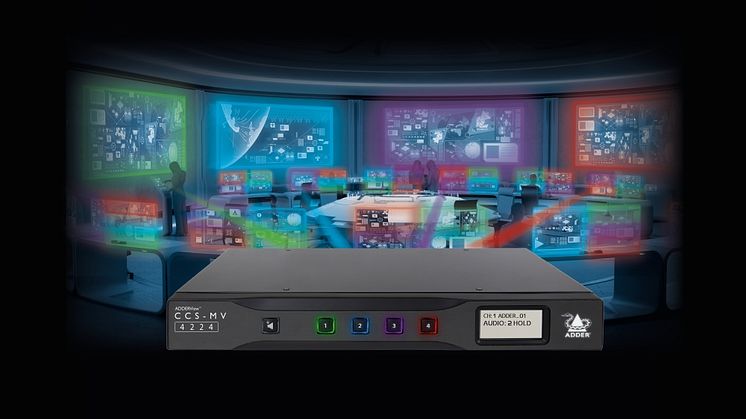
Blog post -
The Importance of Cognitive Ergonomics and Situational Awareness in the Control Room
Well considered ergonomics in control room design enable effective decision making and minimize the risk of human error in the process.
According to Endsley and Smolensky’s Three-Level Model of Situational Awareness (1998)*, there is an increasing degree of awareness as information is processed at a higher level. But in order to achieve situational awareness, system subcategories such as mode awareness, spatial awareness and time awareness must all be considered.

If we look at this graphic in the context of a control room, the performance of action is reliant on perception, comprehension and projection of the environment and data. A tidy and quiet working environment, that is conducive to making critical decisions, is paramount for perception. Comprehension of the task at hand is required to act both quickly and accurately. And projection of future states and events is critical to ensure operators remain one step ahead. In the control room, this future insight is often managed through data visualization and collaboration. Should all these factors align, then a timely decision can be made, and optimal performance is achieved.
When thinking about perception, and the working environment, it is critical that control room designers think about the full ergonomic paradigm - from the physical aspect to the mental aspect. This shift is often facilitated by prioritization of technology above other elements of control room design. We must consider how both environmental and workplace ergonomics affect the most important of all – cognitive ergonomics.
The definition of cognitive ergonomics, as stated by the International Ergonomics Association, is being “concerned with mental processes, such as perception, memory, reasoning, and motor response, as they affect interactions among humans and other elements of a system.”
The factors behind cognitive ergonomics make it a highly complex subject. Relevant topics include mental workload, decision-making, skilled performance, human-computer interaction, human reliability, work stress and training as these may relate to human-system design.
Disruption, interruptions, and information overload can all be factors which impair clarity of thought, and the subsequent wellbeing of those on the front line. This, combined with the rate at which technologies are iteratively improving systems, is intrinsically connected to increasing volumes of data and its subsequent analysis and interpretation – a process that fits within situational awareness.
If a control room operative doesn’t have optimum situational awareness, and the mental wellbeing to fulfil their role, then it becomes a threat to the services within which they operate. As a result, managing, reducing, or eradicating factors which impact situational awareness is paramount to avoid harmful situations and any impact on mission-critical and potentially life or death situations.
To find out how high performance KVM can be used to improve cognitive ergonomics in your control room, download Adder's latest white paper.
* Endsley, M. R. & Smolensky, M. W. (1998) Situational Awareness in Air Traffic Control: The Picture Human Factors In Air Traffic Control



